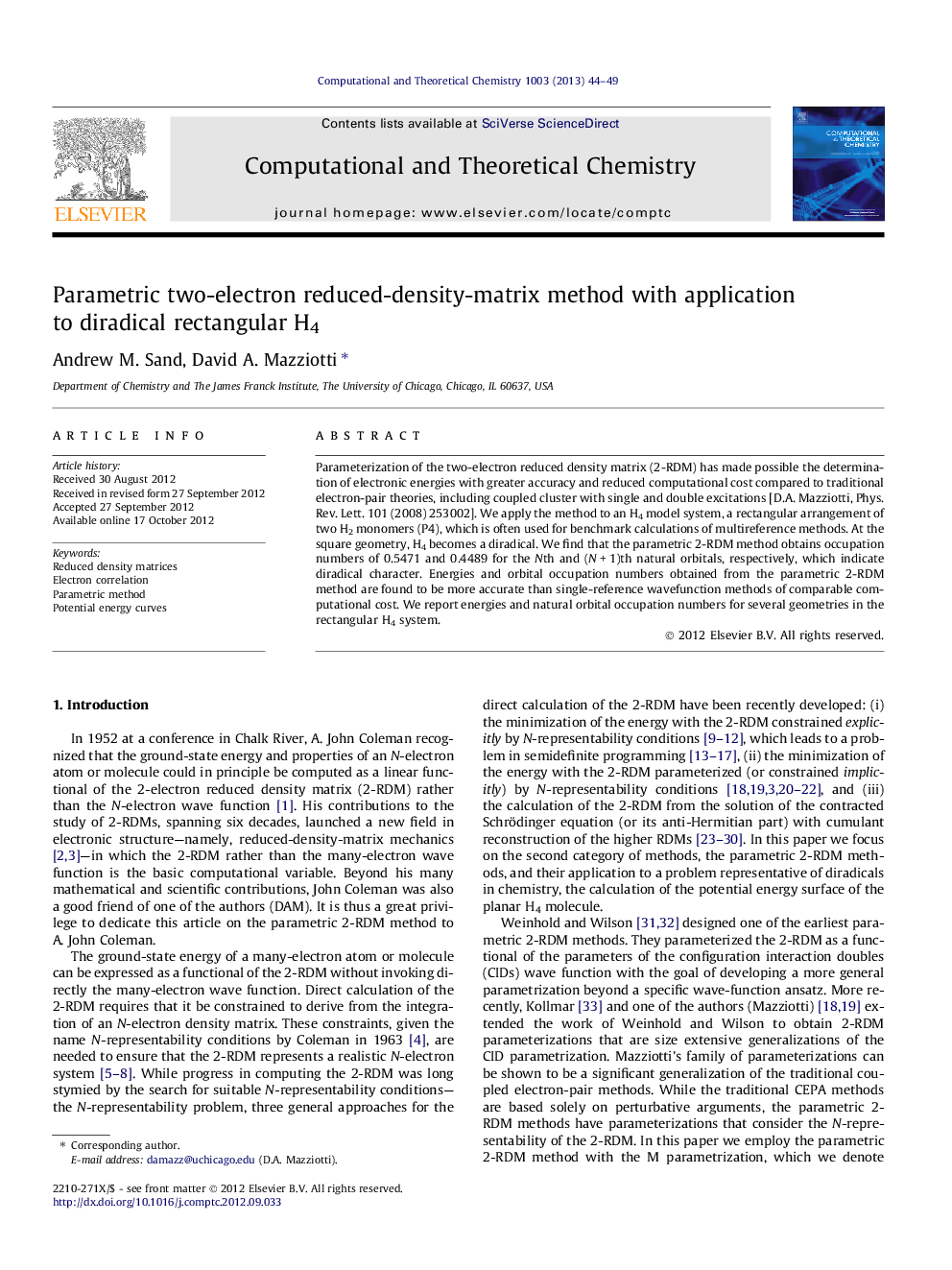| Article ID | Journal | Published Year | Pages | File Type |
|---|---|---|---|---|
| 5394389 | Computational and Theoretical Chemistry | 2013 | 6 Pages |
Parameterization of the two-electron reduced density matrix (2-RDM) has made possible the determination of electronic energies with greater accuracy and reduced computational cost compared to traditional electron-pair theories, including coupled cluster with single and double excitations [D.A. Mazziotti, Phys. Rev. Lett. 101 (2008) 253002]. We apply the method to an H4 model system, a rectangular arrangement of two H2 monomers (P4), which is often used for benchmark calculations of multireference methods. At the square geometry, H4 becomes a diradical. We find that the parametric 2-RDM method obtains occupation numbers of 0.5471 and 0.4489 for the Nth and (NÂ +Â 1)th natural orbitals, respectively, which indicate diradical character. Energies and orbital occupation numbers obtained from the parametric 2-RDM method are found to be more accurate than single-reference wavefunction methods of comparable computational cost. We report energies and natural orbital occupation numbers for several geometries in the rectangular H4 system.
Graphical abstractDownload full-size imageHighlights⺠2-RDM method captures the diradical character of square H4. ⺠2-RDM method yields more accurate energies than coupled cluster with single-double excitations. ⺠2-RDM method has a computational cost comparable to configuration interaction singles-doubles.
